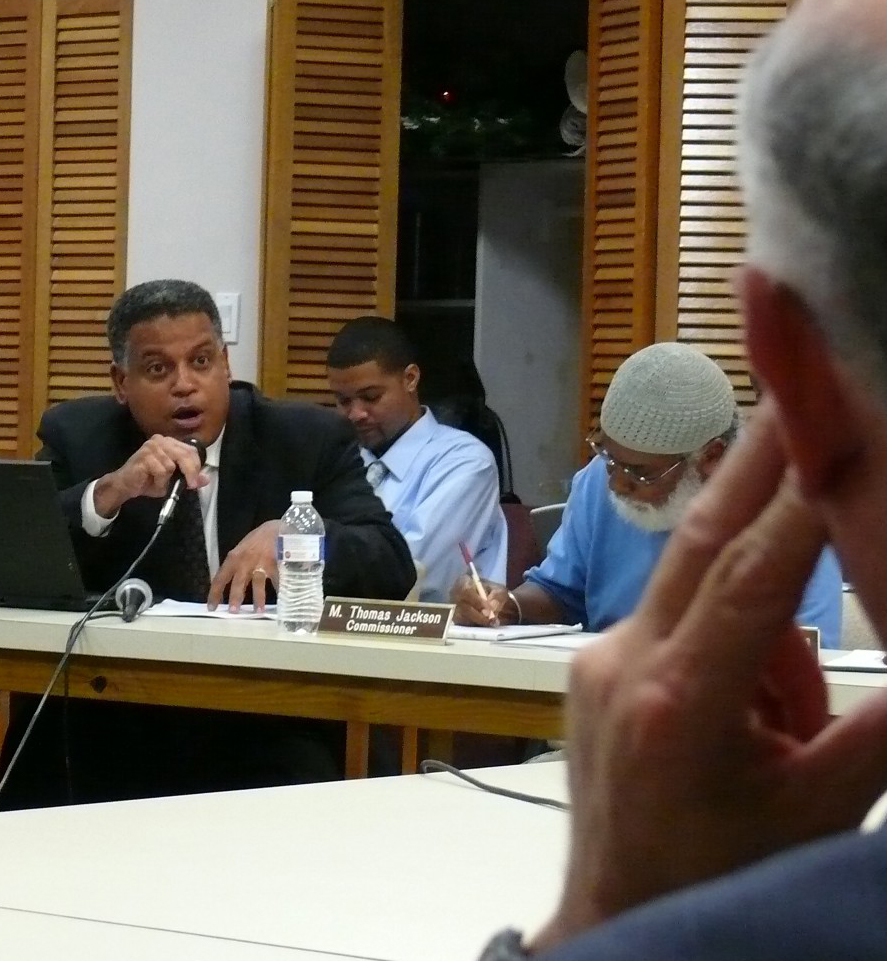
In August, Government House announced the Water and Power Authority had entered into two power-purchase agreements with Denver-based Alpine Energy Group for waste-to-energy facilities on St. Thomas and St. Croix. At the same time, Government House said the Waste Management Authority would contract with the same agency and use the facilities to help reduce waste at the territory’s two landfills. Both sets of agreements are for 20 years.
The PSC, which regulates the territory’s utilities, must decide whether to approve the project, held a hearing Monday on St. Croix and Tuesday on St. Thomas for public input.
WAPA Director Hugo Hodge Jr., WMA Director May Adams-Cornwall and a bevy of consultants testified to their support of the project at the St. Croix meeting Monday, saying it would help solve the territory’s trash disposal problem and reduce dependence on petroleum with its high cost and price volatility.
The generators would burn about 150 tons a day of pelletized trash at each of the two sites, with the rest of the fuel needs coming from petroleum coke, Hodge said. The St. Thomas plant would have a 33 MW of capacity and the St. Croix one 16 MW. Over the 20 year agreement, on St. Croix are projected to result in a combined savings of about $101 million to $275 million in current dollars, without CO2 legislation in Congress and $10 to $183 million with expensive carbon capping legislation, he said.
When fully operational, the two proposed projects are estimated to supply between 31 percent to 36 percent of St. Thomas electricity and 28 to 32 percent of St. Croix’s power. The two are projected to display about 625,000 barrels per year on both islands combined.
According to the agreement hammered out between WAPA, the WMA, Government House and Alpine, the company will invest $440 million — $280 million on St. Thomas and $160 million on St. Croix — to construct the refuse-derived fuel-and-power-generation facilities.
WAPA will pay to build the interconnect grid infrastructure and Alpine will reimburse the utility up to $15 million per island. WAPA will also spend $6 million to $8 million in bond proceeds and other internally generated funds on upgrades to St. Croix’s Richmond Power Plant.
The permitting phase is expected to last nine to 12 months, putting the start of construction around May 2010. On St. Thomas, the facility will be located in Long Point — or Estate Bovoni — while St. Croix’s facility will be built near the Krause Lagoon, between the container port and molasses pier.
Cornwall, of WMA, said the plants offer a solution to the expensive, vexing problems of how to close the territory’s landfills and meet the conditions of several federal consent decrees.
"When I came on board in 2005 we had at least six consent decrees" affecting the territory’s landfills and wastewater treatment, she said. "Fines were accumulating on a daily basis," she said.
Because the landfill was near the airport on St. Croix, the airport was unable to get federal grants for capital improvements and was at risk of being ordered closed, she said.
"My highest concern is to get the landfill closed to meet the terms of the consent decree and avoid more fines," she said. "Next is how to pay to dispose of the waste, because it is not free."
PSC member Donald Cole asked why WAPA didn’t go for solar or wind power when considering proposals for alternative power generation.
"There was a project that had a combination of wind and solar," Hodge said. "But it didn’t come in below our avoided costs." The solar and wind project would have cost more to ratepayers than even the current power generation system, he explained.
"But with all that said, we are pursuing an RFP (request for proposals) strictly for solar power, so it is not that we have gone away from solar," he said. "This project here solves over a dozen of our existing problems, from consent decrees to how to dispose of our trash, has a cost savings over our avoided costs and is one where … the company can really perform what they say."
PSC member Sirri Hamad asked why the amount of alternative power generation was limited to less than a third of the total. Hodge replied that for the time being, WAPA needed the existing power production infrastructure both to create public drinking water from sea water and to be able to handle swings in power generation.
PSC member Elsie Thomas-Trotman asked why there was a rush for the PSC to approve the project.
"What is the rush," she said. "Tonight is the first night of discussion and tomorrow we have to make a decision?"
Hodge said the timeline in the negotiated agreement was not flexible.
"No lender will give approval to such a project without PSC approval in place," he said.
PSC member M. Thomas Jackson asked what would happen if the project were rejected,.
"We can always do wind and solar, but not and also provide a cost saving to the consumer," he said. "If we do nothing, with fuel oil and its volatility (in price) it could be a disaster."
Cornwall said burning pelletized solid waste solved numerous problems and without the project, the WMA would be at square one, with Environmental Protection Agency consent decrees, daily fines, possible airport closure and only the option of baling and shipping garbage off island.
"There is an extraordinary high cost of waste disposal, doing it that way," Cornwall. "As a matter of fact, it is prohibitive. It would be a drain on our economy."
Hearings continue Tuesday on St. Thomas.